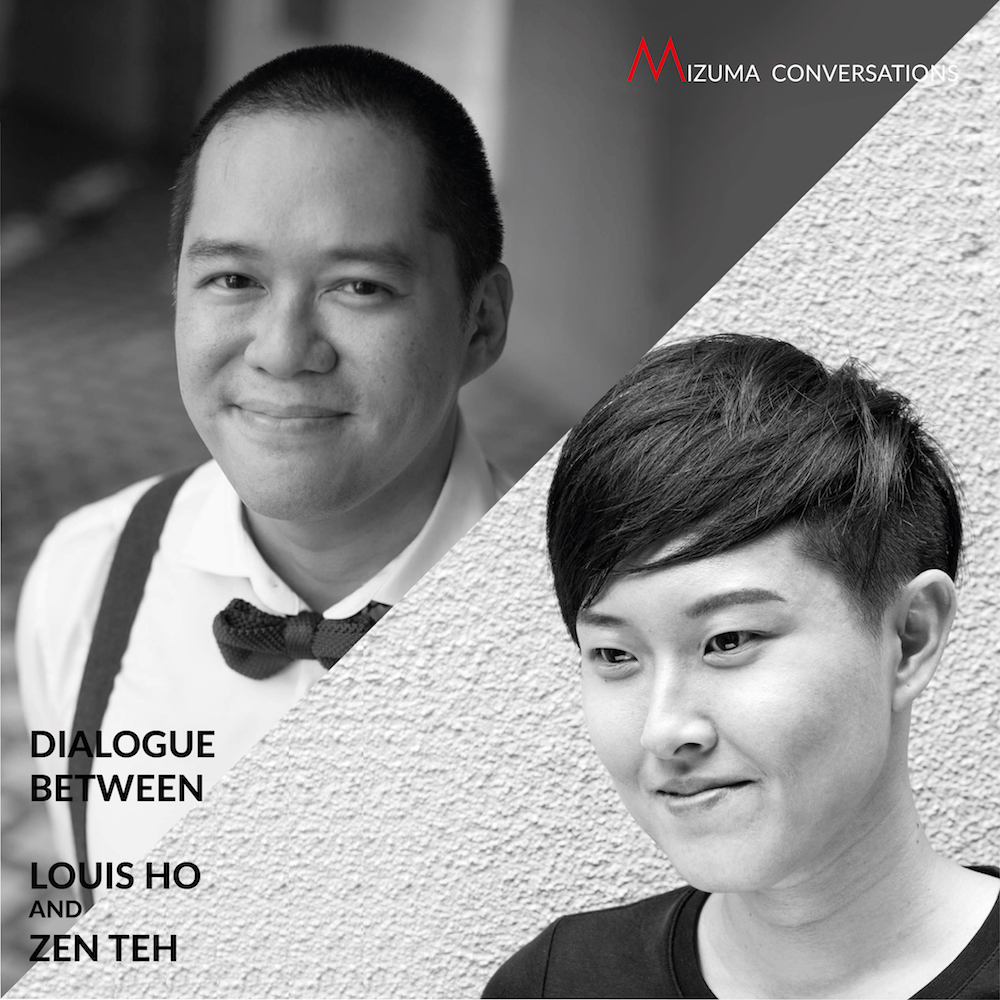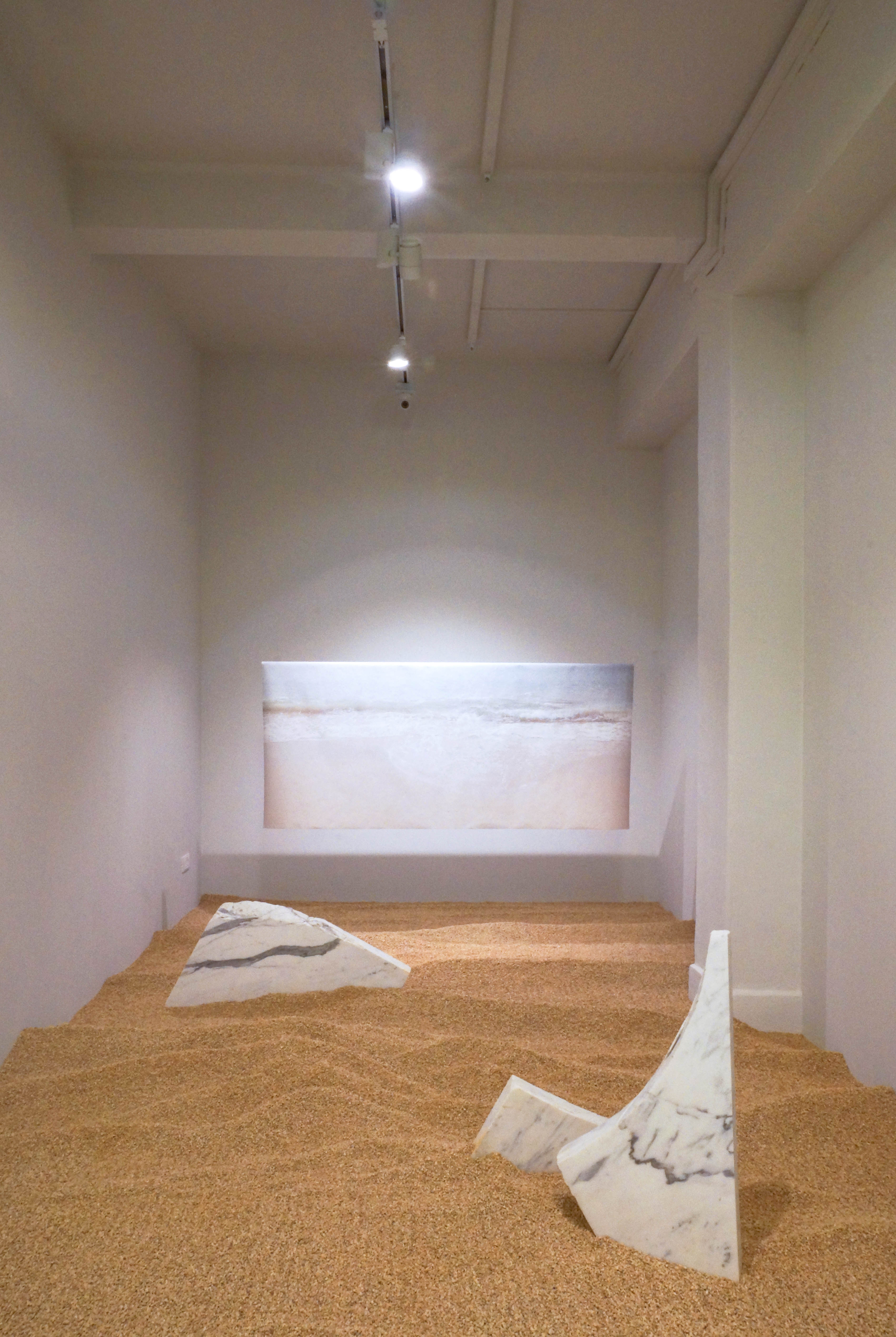“You’re considered primarily a photographic artist – the photographic image plays a large part in your work, in your practice. But for me, what’s interesting is that, visual information is almost abstracted out of the equation, as if the viewer is unable to perceive the image clearly. Could you tell us a little bit more about this aspect of this dimension of your practice?”
– Louis Ho
Tune in to our IGTV this week to watch our latest release of Artist Dialogues series, featuring artist Zen Teh in conversation with independent curator & art critic Louis Ho.
Louis Ho is an independent curator and critic. He has lectured at the National Institute of Education, and is a contributor to various journals and publications, such as Modern Chinese Literature and Culture and Art Asia Pacific. He was trained in art history, and his research interests include Southeast Asian visual culture and the intersections between art and the social. He was previously a curator at the Singapore Art Museum, where his first exhibition was the permanent collection show, After Utopia: Revisiting the Ideal in Asia Contemporary Art; other exhibitions included the Asia Pacific Breweries Foundation Signature Art Prize 2018 show. He was also a co-curator of the Singapore Biennale 2016, An Atlas of Mirrors. Louis Ho lives and works in Singapore.
Zen Teh (b. 1988, Singapore) graduated with a BA in Photography and Digital Imaging from Nanyang Technological University, Singapore in 2011; and is currently pursuing MA (Research) on interdisciplinary art and education from National Institute of Education, Nanyang Technological University, Singapore. Her solo exhibitions include Mountain Pass: Negotiating Ambivalence at Mizuma Gallery, Singapore (2019) and at Selasar Sunaryo Art Space, Bandung, Indonesia (2019); Garden State Palimpsest at ARTIST+RUN, Bangkok, Thailand (2018); and Vestiges: Tracing Urban-nature at Alliance Française de Singapour, Singapore (2017). Teh was the finalist for the IMPART Awards 2019 and has been awarded the winning title for the 7th France+Singapore Photographic Arts Award (2017). Zen Teh lives and works in Singapore.
Scroll through for the video dialogue, as well as the text transcript below.
Watch the Video:
___________
Louis Ho (Louis): Hi, thanks for joining us today. My name is Louis, I’m a curator based here in Singapore, and today we will be chatting with artist, Zen Teh.
Zen Teh (Zen): Hi everyone, hi Louis, thanks for joining us for this dialogue today. I’m Zen Teh, I’m an artist and educator based in Singapore. My practice surrounds human-nature relationships, highlighting environmental concerns that are activated in urban spaces.
Louis: You’re considered primarily a photographic artist – the photographic image plays a large part in your work, in your practice. But for me, what’s interesting is that, visual information is almost abstracted out of the equation, as if the viewer is unable to perceive the image clearly. Could you tell us a little bit more about this aspect of this dimension of your practice?
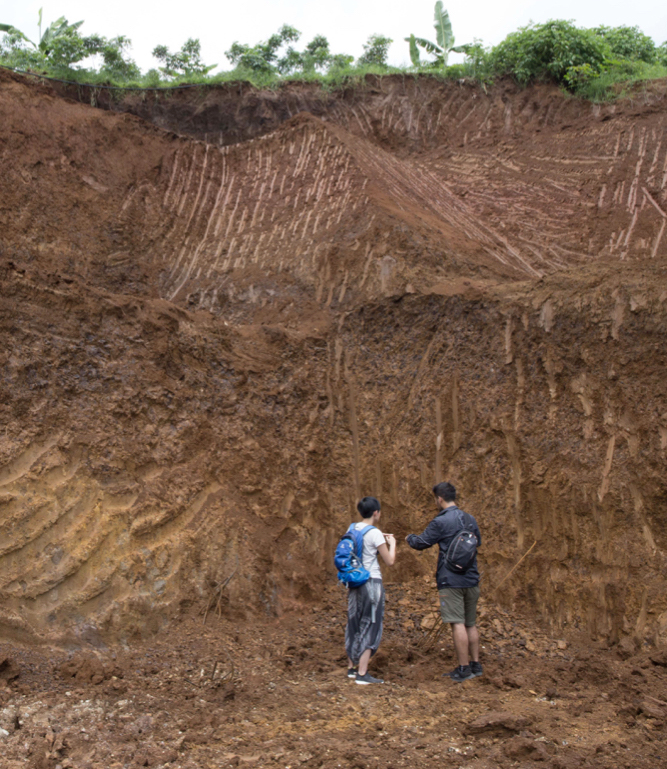
Site Research: Zen Teh (Artist) with Rinaldi Ikhram (Geologist) at the Dago Pakar Resort construction site
Zen: Wow Louis, that’s a really good question. Well I guess, that sense of abstraction that is present in my photographs – they are kind of responding to my experiences of research into the site. I think particularly in terms of the process of the research, say for instance in my residency that I did with Selasar Sunaryo Art Space, the research site that I was working on was the largest construction site in the north of Bandung. Because it was sort of a site where it was still in the midst of transition, it was still building, it was still constructing, the land was still changing. So every single time that I visited the space, it was constantly under the state of change, and every time I reached there to do the studies, to pick up samples, to just explore and understand the space, it was always a different kind of experience because something would have morphed and changed in the process.
So in a way, I would say that the memory and the interaction with that space, that change, also kind of alludes to that abstraction that you see in the image.
Also that because I think, the research part of my work plays a great deal of influence in terms of the final outcome. I really allow the research process, the findings, and the way I experienced it, whether physically, emotionally, or even intellectually, I think all that has a great deal of influence on how the final work will eventually look like. So in fact, I think a lot of times before I begin on a work or begin on a project, I have no clue what it would look like, so I really kind of allow that exploration to take place.
And so I think in a way you can say that my work is based on the truth of the matter, and how I relate to the issues at hand. I try to kind of draw that perspective, and also almost inevitably, I guess, as a Singapore-based artist and also my experiences living on land, or even close to the site where I was researching on.
I think another possible way to think about this is, I guess, the desire of the photographic intervention to achieve harmony with these found three-dimensional objects. And I think these found materials naturally kind of assume the role of the artifact because they were picked up from the site and they are studied on. So for example the volcanic rocks right, so those were being cut as well to create really thin samples to be looked under the microscope. So like, the use of the scientific process to try to investigate and understand what could have happened before, what could this site have been. I think that often leaves us with a lot of imagination to try to find ways to think what this site could have been, in a way that is humanly understandable.
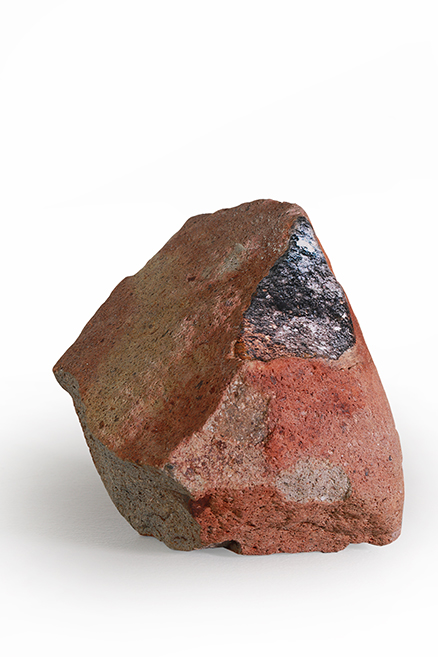
After Monument: Imprinting Geological Traces 1, 2019, © Zen Teh, photo by Adi Rahmatullah, courtesy of Selasar Sunaryo Art Space and Mizuma Gallery
So these raw materials that I picked up then become those artifacts and those samples of investigation. And I think particularly I want to highlight about this – the studying of these materials that I found. So those rocks for example, I mean they took hundreds and thousands of years, or even a million years to form slowly. And they definitely then contain traces of the past, and when we closely observe them, it helps us to analyze, imagine, and speculate what this particular site could have been, you know say, a thousand years ago. But unfortunately, in all of history that we study, we only see traces of it, we see snippets of evidence, but they don’t always form the full picture and there are some sense of distortion or incomplete picture. So it leaves us having to imagine. So I think much like the artists, the geologist was also sharing with me that there is a lot of this imagination that is required in order for them to make sense of the site and to investigate even further.
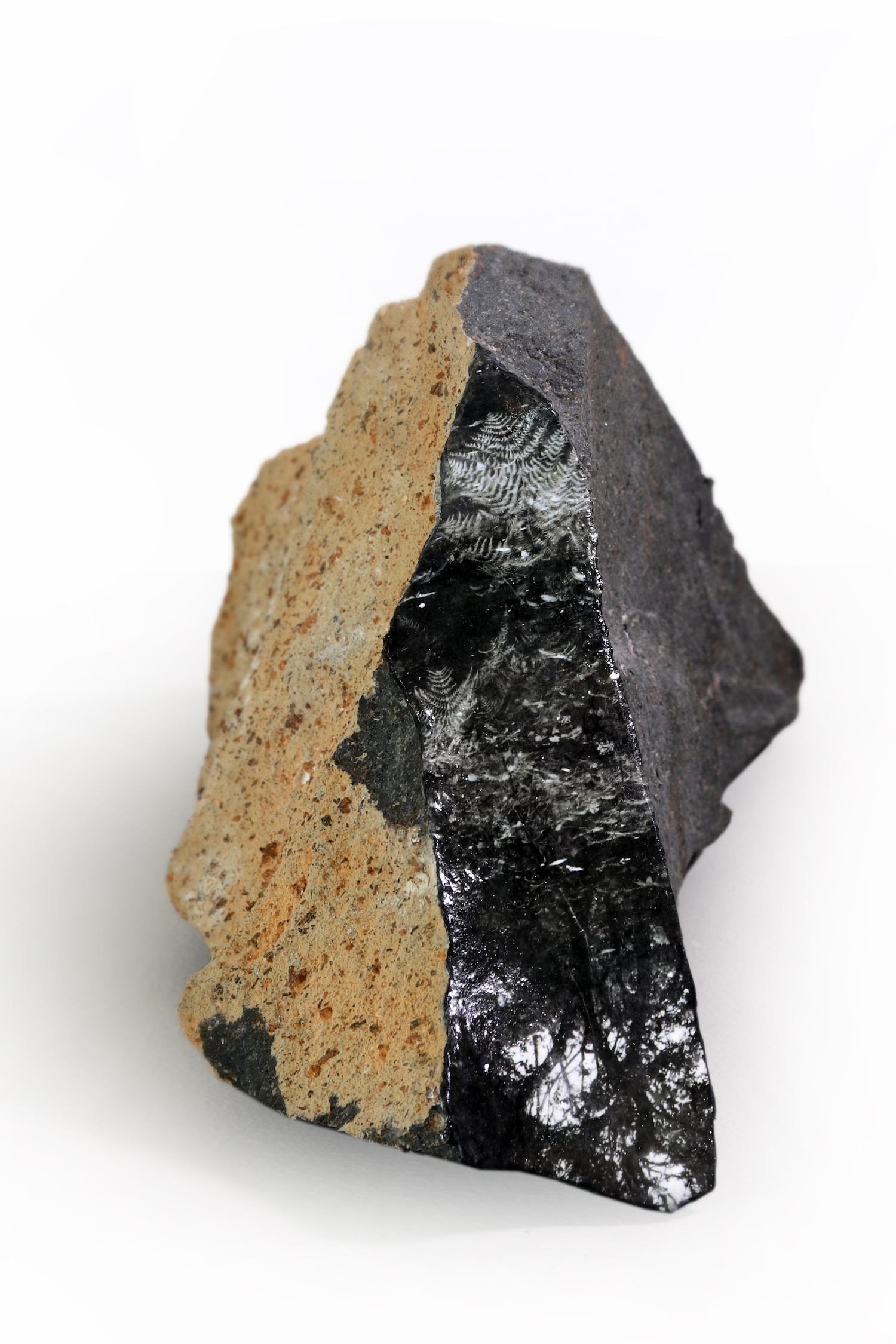
After Monument: Imprinting Geological Traces 3, 2019, © Zen Teh, photo by Adi Rahmatullah, courtesy of Selasar Sunaryo Art Space and Mizuma Gallery
So for me, by incorporating images onto these found rocks – the images really add another layer of dimension to the form, giving glimpse into some final details of the imagined landscape. I think particularly because of the research component, say you look at the petrography, which is the microscopic image of the rock, we can’t see them with the naked eye. We also can’t see the other geological studies or research that could be immediately evident just from the found rocks. So this rock becomes sort of a representative and also this artifact, but at the same time I wanted to suggest more, I wanted people to get a glimpse into the kind of imagination that took place and lead people to imagine what this site could have been based on our research. So you see some snippets for example, on these volcanic rocks – an imagination of a marsh, much like a swampy area, which was what we found based on our research.
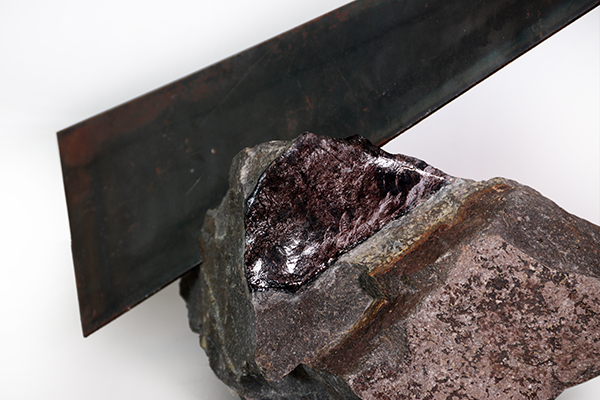
After Monument: Intrusion 1, 2019, © Zen Teh, photo by Adi Rahmatullah, courtesy of Selasar Sunaryo Art Space and Mizuma Gallery
Sometimes I present snippets of that, sometimes I present snippets of the kind of construction marks, of that kind of tension that I see and witness at the site itself. Whether they are in contrast to the natural material found, in terms of the narrative, or they are in harmony with that, I think regardless, what I also try to sought to achieve is that kind of visual harmony. Because I think that there is almost like an unconscious attempt to try to reconcile with what I see from my eyes, and to achieve that sense of balance.
Louis: The other interesting aspect of your practice is your use of the found object, on which you imprint your photographic images. Could you tell us a little more about this juxtaposition of the two- and three-dimensional?
Zen: So regarding the use of raw materials and this idea of integrating between two- and three-dimensional forms, I think earlier I also spoke a little bit about that. But really, I think I’ve always been interested in exploring the spaces between binaries. That is why I no longer look at my art making in a very specific lens of whether this is defined as two-dimensional, three-dimensional work, or am I looking at this spatial composition in installation works. So to me, the meaning of the work dictates the form that it comes in.
Over the years, I began first with being a painter, and then I did photography. I’m still characterized, I think, by a lot of my photography works, but I’ve also since ventured into sculpture and installation works.
So similarly, I think for the past couple of years, I have been working with professional friends from other fields, such as ecology, biology, medicine, dance, literary arts, design, and so on. And that is because I think I really enjoy seeking the possibilities that are in between these defined disciplines. Many of the times, I think it really surprised me; the way of working together and how much commonality that we have, just between the disciplines. And how much depth, and how much surprising outcome or ways of thinking that we can gather just because of collaborating with another person, and having that interjection of perspective from another discipline. So I think to me, really whether it’s material use, or the type of art making, or the way of working, I see more fluidity rather than boundaries.
Louis: So, there are connections between your practice and forms of traditional visual culture, such as Chinese landscape painting, the Japanese use of gold in art, even the Japanese philosophy of wabi-sabi – which of course comprises the aesthetics of erosion, of wear and tear. Could you say a little more or could you expand on this dimension of your practice?
Zen: Well I guess I believe that there’s beauty in all things, and it’s a kind of way of embracing life and the natural course of things. For instance, I am a plant lover (as you can see right here). I really appreciate the beauty, the purpose and function of all stages of a plant’s life, even [in] the death and decay, is something that is, I mean, it’s definitely beautiful. But it’s also purposeful and it contributes to the vitality of life.
So I guess you can say that it kind of relates to the philosophy of wabi-sabi, the appreciation of the imperfections. And anyway, beauty is a cultural construct. While in Singapore particularly, I think we’re so accustomed to having a clean and green city, a highly constructed structural modern space. So everything always looks new and it’s so much effort just put into upkeep of this almost perfect, somewhat artificial effect – a rather tense place where the carpet is constantly swept under our feet.
So the traces of history, culture, and heritage, I think that gradually dilutes away or almost erases in some occasions. And I guess that could be one of the reasons why I seek spaces in between these clearly defined and perfect forms, to bring to light some of these forgotten spaces.
So, thank you so much for being here with us today. I hope that this gives you a little bit of insight into how my practice is and what are the things I believe in. Thank you.
—
© Louis Ho, Zen Teh, Adi Rahmatullah, Selasar Sunaryo Art Space, and Mizuma Gallery.
Transcribed by Marsha Tan and Theresia Irma.

